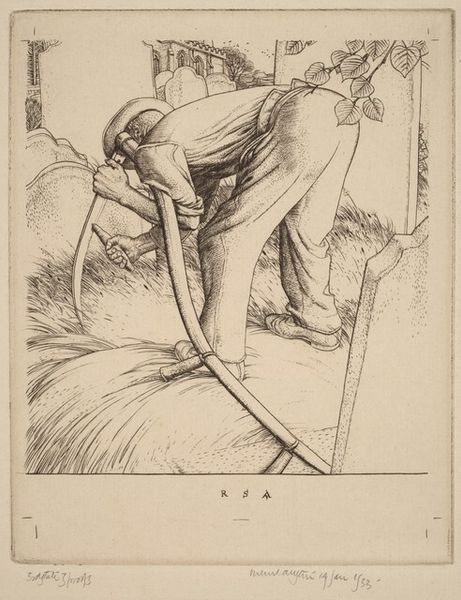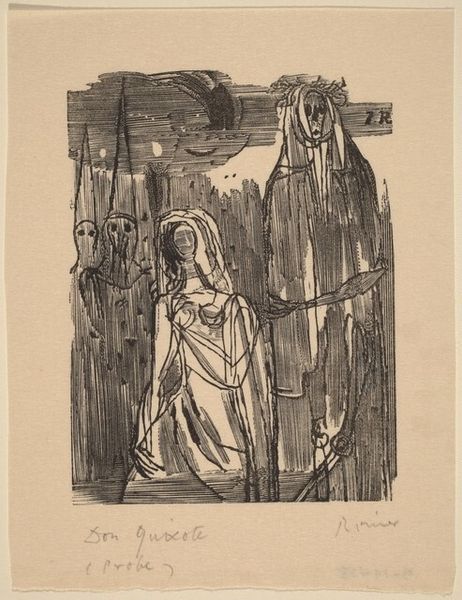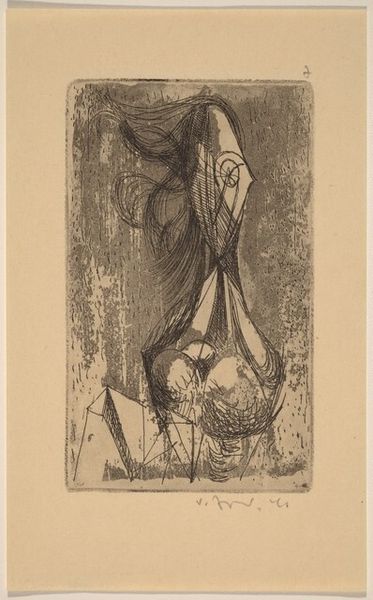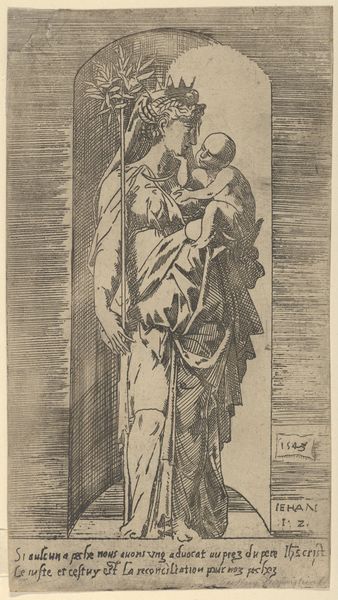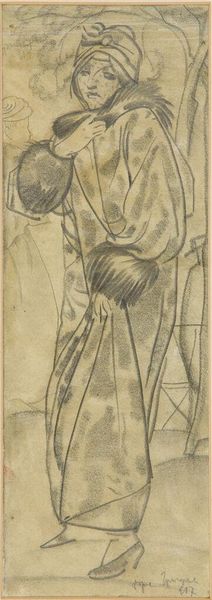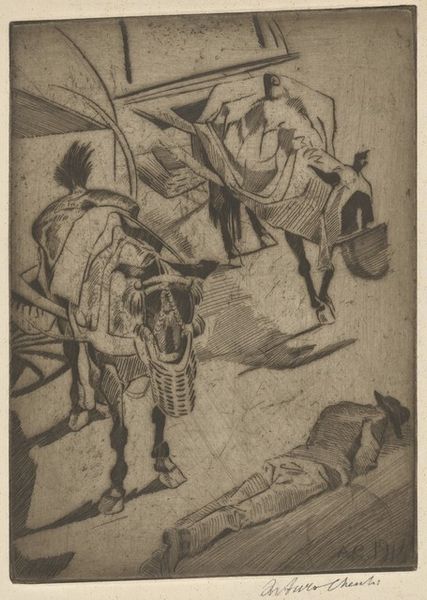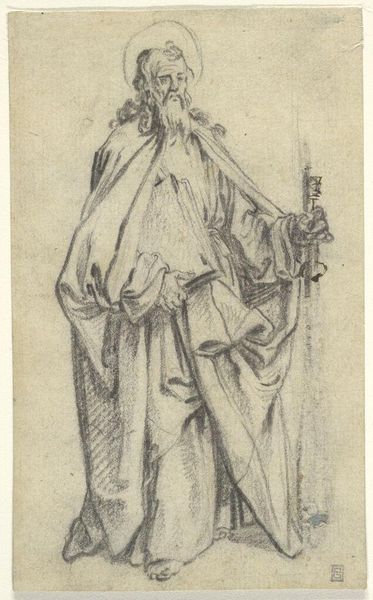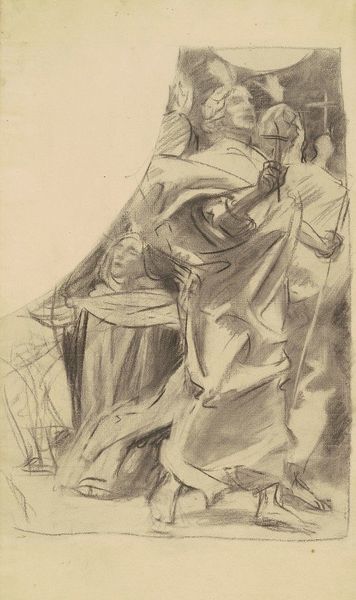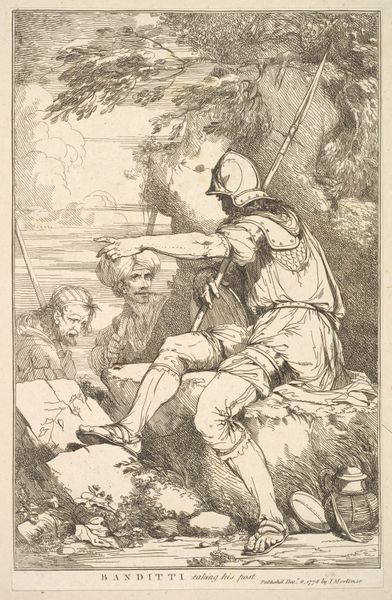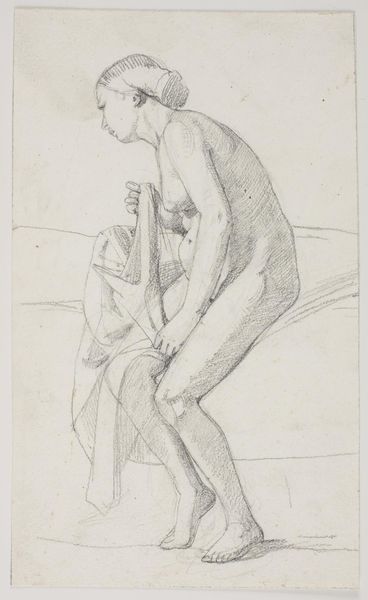
drawing, print, ink
#
portrait
#
drawing
#
ink drawing
# print
#
figuration
#
ink
#
genre-painting
#
realism
Dimensions: plate: 16.9 x 12 cm (6 5/8 x 4 3/4 in.) sheet: 28.2 x 21.1 cm (11 1/8 x 8 5/16 in.)
Copyright: National Gallery of Art: CC0 1.0
Editor: This is "Widow," a 1944 print by Robert Austin. It looks like an ink drawing of a woman sawing wood. It strikes me as incredibly stark and sort of sad. What do you see in this piece? Curator: Well, immediately I'm drawn to the labor being depicted. The figure, presumably the widow of the title, is engaged in physical work. Consider the materiality here: wood, a saw, ink on paper. These are not rarefied materials, are they? This engraving shows a woman engaged in what looks like her essential work. Think about wartime economies and how they reshape labor; does that framing shift your reading? Editor: Definitely. The setting—the rough-hewn wood, the simple clothing—highlights the sheer manual effort. It makes me think about resourcefulness and the pressure wartime puts on everyday lives. Are you suggesting Austin’s drawing is making a social statement? Curator: Precisely! I suggest the artist calls attention to the dignity and perhaps drudgery of this specific labor within the print medium, itself a craft, by calling our attention to all of the various physical properties that come together in both activities. I wonder if Austin saw this print medium as a tool to convey these observations and feelings of the impact of the conflict he found around him? How does its status as a print, a potentially reproducible object, impact its meaning to you? Editor: I hadn’t considered it that way, but that makes a lot of sense. Because it is reproducible, this image has the capacity to serve as document and example of wartime austerity. Thank you for that lens! Curator: It's about recognising how the mundane informs everything else. Appreciating the tangible can reveal incredible things.
Comments
No comments
Be the first to comment and join the conversation on the ultimate creative platform.
